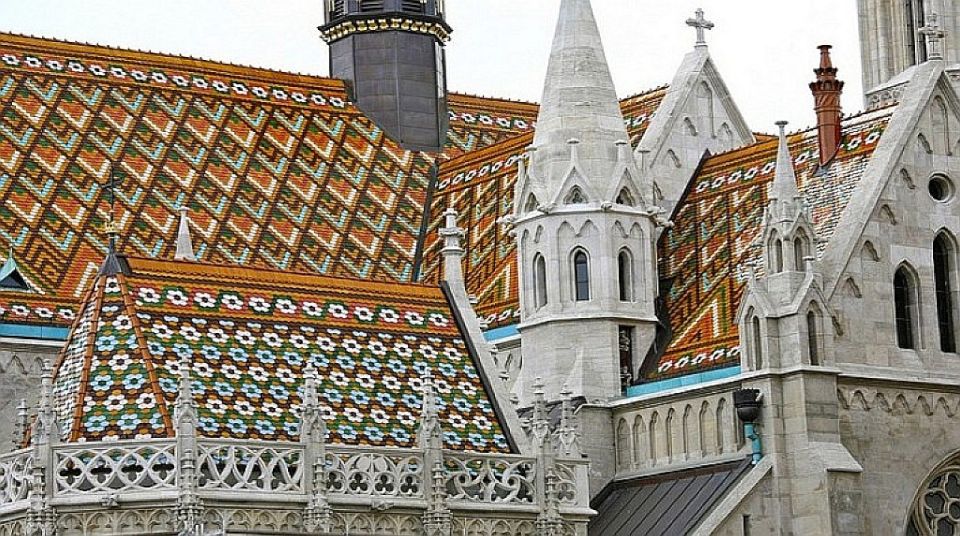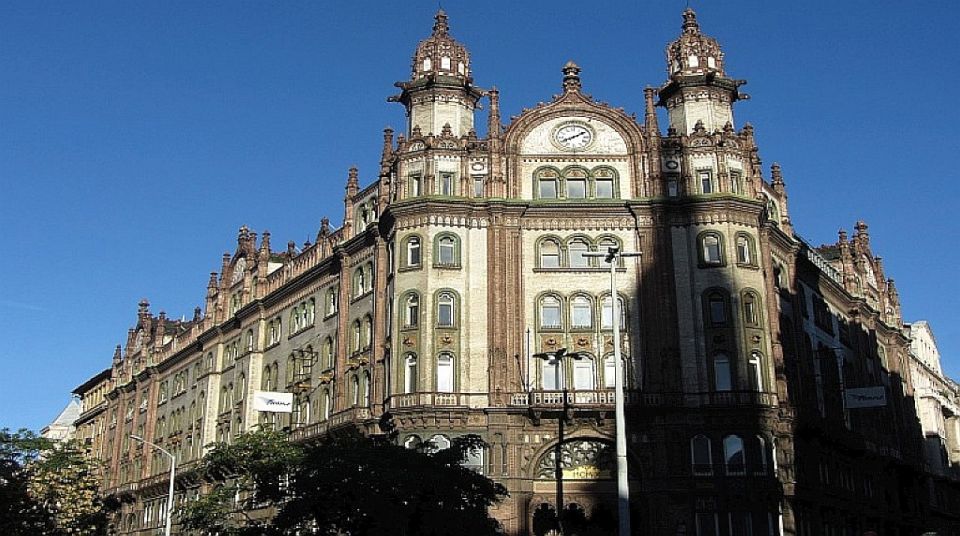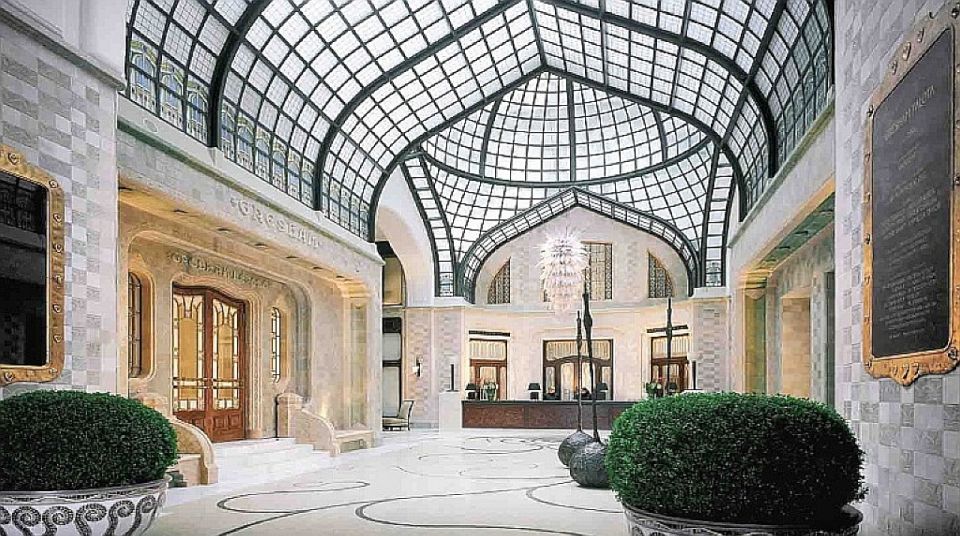Architecture Gems
Strolling through Budapest’s architectural gems is akin to unraveling a tapestry of history and innovation woven into the city’s skyline. Each building tells a unique story, from the majestic Music Academy to the intriguing mummified right hand at St. Stephen Basilica.
Vajdahunyad Castle stands as a testament to the diverse architecture styles that have shaped Budapest over centuries. As visitors explore Baroque, Neo-Gothic, and Neo-Classical structures, they’ll be captivated by the intricate details and grandeur of past eras.
Stay tuned to discover how Budapest’s Art Nouveau and Post-Modern buildings add a modern twist to the city’s rich architectural tapestry.
Key Points

- Explore a thousand years of European architecture history in Budapest
- Discover a variety of architectural styles like Baroque, Neo-Gothic, and Art Nouveau
- Visit iconic landmarks such as Music Academy and St. Stephen Basilica
- Experience the unique blend of Post-Modern and Neo-Classical buildings
Music Academy and St. Stephen Basilica
Nestled in the heart of Budapest, the Music Academy and St. Stephen Basilica stand as architectural treasures waiting to be explored by visitors seeking a glimpse into Hungary’s rich cultural heritage.
The Music Academy, designed by architect Flóris Korb and built between 1904 and 1907, showcases a stunning blend of Renaissance, Baroque, and Art Nouveau architectural details. It stands as a testament to Hungary’s commitment to the arts and education.
On the other hand, St. Stephen Basilica, dedicated to the first Hungarian king, is a neo-classical masterpiece with a dome soaring 96 meters high. Its historical significance lies in housing Hungary’s most sacred relic, the mummified right hand of King Stephen I, attracting pilgrims and history enthusiasts alike.
Mummified Right Hand at the Basilica

The journey through Hungary’s architectural wonders continues at St. Stephen Basilica, where visitors can behold the remarkable relic of the mummified right hand of the first Hungarian king. This Basilica hand, an architectural marvel, is a significant piece of history and a unique sight for travelers. The mummified hand is displayed in a beautifully ornate setting, adding to the mystical ambiance of the basilica. Below is a table showcasing the uniqueness of this architectural gem:
| Basilica Hand | Architectural Marvels |
|---|---|
| Mummified right hand of the first Hungarian king | Intricate and ornate display |
| Significant historical relic | Adds to the mystical ambiance of the basilica |
| Unique sight for travelers | Showcases the rich history of Hungary |
Vajdahunyad Castle Architecture Styles

Exploring the Vajdahunyad Castle unveils a captivating tapestry of architectural styles that showcase a rich blend of history and creativity.
The castle’s architecture reflects an intriguing architectural evolution, influenced by various cultural inspirations throughout the centuries. From Romanesque and Gothic elements to Renaissance and Baroque features, the castle’s design embodies a synthesis of different styles that have left their mark on this iconic structure.
Cultural influences from Hungary’s diverse past can be seen in the intricate details of the castle’s facades and interiors, offering visitors a glimpse into the country’s architectural heritage.
Vajdahunyad Castle stands as a testament to the ever-changing landscape of architectural design, making it a must-visit destination for those interested in the fusion of historical and artistic influences.
Baroque, Neo-Gothic, and Neo-Classical Buildings
The architectural journey at Vajdahunyad Castle seamlessly transitions visitors from the captivating tapestry of Romanesque and Gothic styles into a realm where Baroque, Neo-Gothic, and Neo-Classical buildings stand as testaments to Hungary’s rich cultural heritage. These architectural styles represent a significant period in the country’s architectural evolution, showcasing a blend of historical influences. The Baroque style, with its ornate details and grandeur, reflects the artistic richness of the era. Neo-Gothic buildings, inspired by medieval architecture, emphasize verticality and intricate detailing. Neo-Classical structures, drawing from ancient Greek and Roman design principles, exude elegance and symmetry. Each style tells a unique story, contributing to the diverse tapestry of Hungary’s architectural legacy.
| Architectural Style | Description | Historical Period |
|---|---|---|
| Baroque | Ornate grandeur | 17th – 18th century |
| Neo-Gothic | Verticality, detail | 19th century |
| Neo-Classical | Elegance, symmetry | 18th – 19th century |
Art Nouveau and Post-Modern Structures Tour
Set out on a captivating journey through Budapest’s architectural landscape, delving into the intricate designs of Art Nouveau and Post-Modern structures that redefine the city’s skyline. This tour offers a unique opportunity to explore the evolution of urban architecture trends, witnessing the fusion of past traditions with modern innovations.
-
Contemporary structures exploration: Enjoy the avant-garde designs that showcase the creativity and vision of modern architects.
-
Urban architecture trends: Discover how Budapest’s skyline has been shaped by the bold and innovative structures that reflect the current architectural movements.
-
Insightful commentary: Gain a deeper understanding of the influences behind these architectural styles from knowledgeable guides who bring these structures to life.
European Architecture History in Budapest

Explore Budapest’s rich tapestry of European architecture history, tracing a millennium of diverse styles and influences that have shaped the city’s stunning skyline. Budapest’s architecture reflects a blend of European influences, each with its own historical significance.
From Romanesque and Gothic structures to Baroque, Neo-Gothic, and Neo-Renaissance buildings, the city showcases a timeline of architectural evolution. Notable landmarks like Vajdahunyad Castle exemplify this amalgamation of styles, providing a visual narrative of Hungary’s past.
Understanding the European architectural influences in Budapest offers insight into the city’s cultural heritage and its place within the broader context of European history. Explore the streets of Budapest to witness firsthand the intricate tapestry of architectural styles that have stood the test of time.
Live Tour Guide Speaking Romanian
Exploring Budapest’s architectural wonders with a live tour guide speaking Romanian adds a personalized touch, enriching the experience with cultural insights and historical context. This tailored approach allows visitors to delve deeper into the city’s rich heritage while seeing the local language and traditions.
Here are three reasons why having a live tour guide speaking Romanian enhances the architectural tour:
-
Personalized Experiences: The guide can cater to individual interests and preferences, ensuring a customized and memorable exploration.
-
Cultural Immersion: Hearing about Budapest’s architecture in Romanian offers a unique perspective, fostering a deeper connection with the city’s cultural fabric.
-
Historical Insights: The guide can provide historical context and anecdotes in Romanian, bringing the past to life in a more engaging manner.
Flexible Travel Plans and Booking Information
For travelers seeking flexibility in their plans and detailed booking information for the Architecture Gems tour in Budapest, key details are outlined below.
The tour offers free cancellation up to 24 hours in advance for a full refund, providing travelers with peace of mind. Plus, visitors can reserve now and pay later to maintain flexible travel plans.
The activity duration is 4 hours, with various starting times available, ensuring convenience for all participants. Booking options include payment plans, allowing guests to secure their spots without immediate payment.
It’s important to note that the live tour guide speaks Romanian, offering a personalized experience for Romanian-speaking travelers. By considering these travel flexibility and booking details, travelers can better plan their exploration of the architectural wonders in Budapest.
Common questions
Are There Any Restrictions or Guidelines for Taking Photos Inside the Music Academy and St. Stephen Basilica?
Photography rules at the Music Academy and St. Stephen Basilica are typically lenient, allowing visitors to capture their experiences. However, dress codes might apply, especially in religious settings like the Basilica, where modest attire is often required.
Is There a Specific Dress Code or Attire Required When Visiting the Mummified Right Hand at the Basilica?
When visiting the mummified right hand at the Basilica, there isn’t a strict dress code, but it’s advisable to dress modestly out of respect for the religious significance. Following cultural norms enhances the experience.
Can Visitors Enter All Parts of Vajdahunyad Castle to Explore the Different Architectural Styles, or Are There Restricted Areas?
Visitors can explore various architectural styles at Vajdahunyad Castle, but some areas may be restricted. The castle showcases Baroque, Neo-Gothic, and Neo-Classical buildings. Pay attention to architectural details while enjoying the tour of Art Nouveau and Post-Modern structures.
Are There Any Specific Features or Details That Distinguish Baroque, Neo-Gothic, and Neo-Classical Buildings From Each Other in Budapest?
In Budapest, Baroque buildings feature ornate decorations and grandeur, while Neo-Classical structures emphasize symmetry and simplicity. Neo-Gothic buildings showcase pointed arches and intricate details. Each style reflects different architectural influences, creating a diverse urban landscape in Budapest.
Are There Any Famous Architects or Specific Influences That Are Prominent in the Art Nouveau and Post-Modern Structures Included in the Tour?
In Budapest, influential architects like Ödön Lechner and Miklós Ybl shaped the Art Nouveau movement, drawing from Hungarian folklore. Post-modern structures reflect a mix of styles, with historical influences seen in the work of Tibor Weiner and Antal Puhl.
Last Words
Discover the rich tapestry of architectural wonders in Budapest with a private guided tour that showcases the city’s most enchanting gems. From the grandeur of the Music Academy to the diverse styles of Vajdahunyad Castle, travelers can enjoy a thousand years of European architectural history.
With the flexibility of reserving now and paying later, along with the convenience of pick-up and drop-off services, this personalized exploration promises an unforgettable experience for architecture enthusiasts.